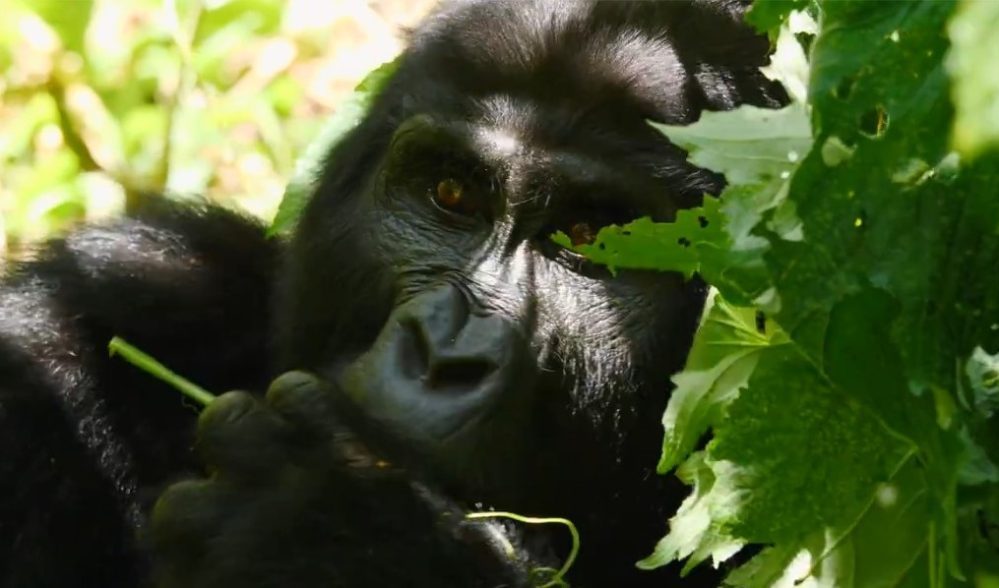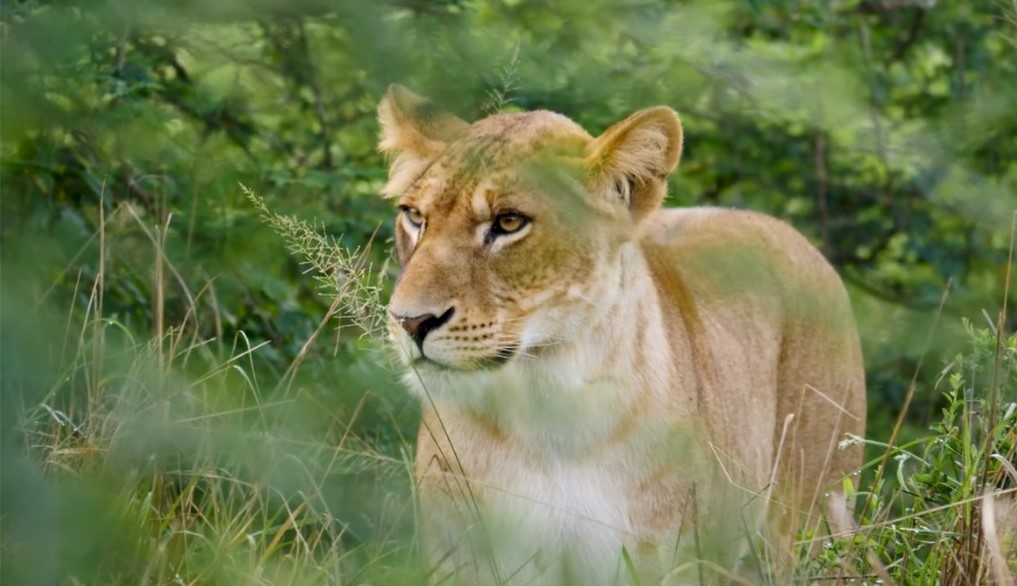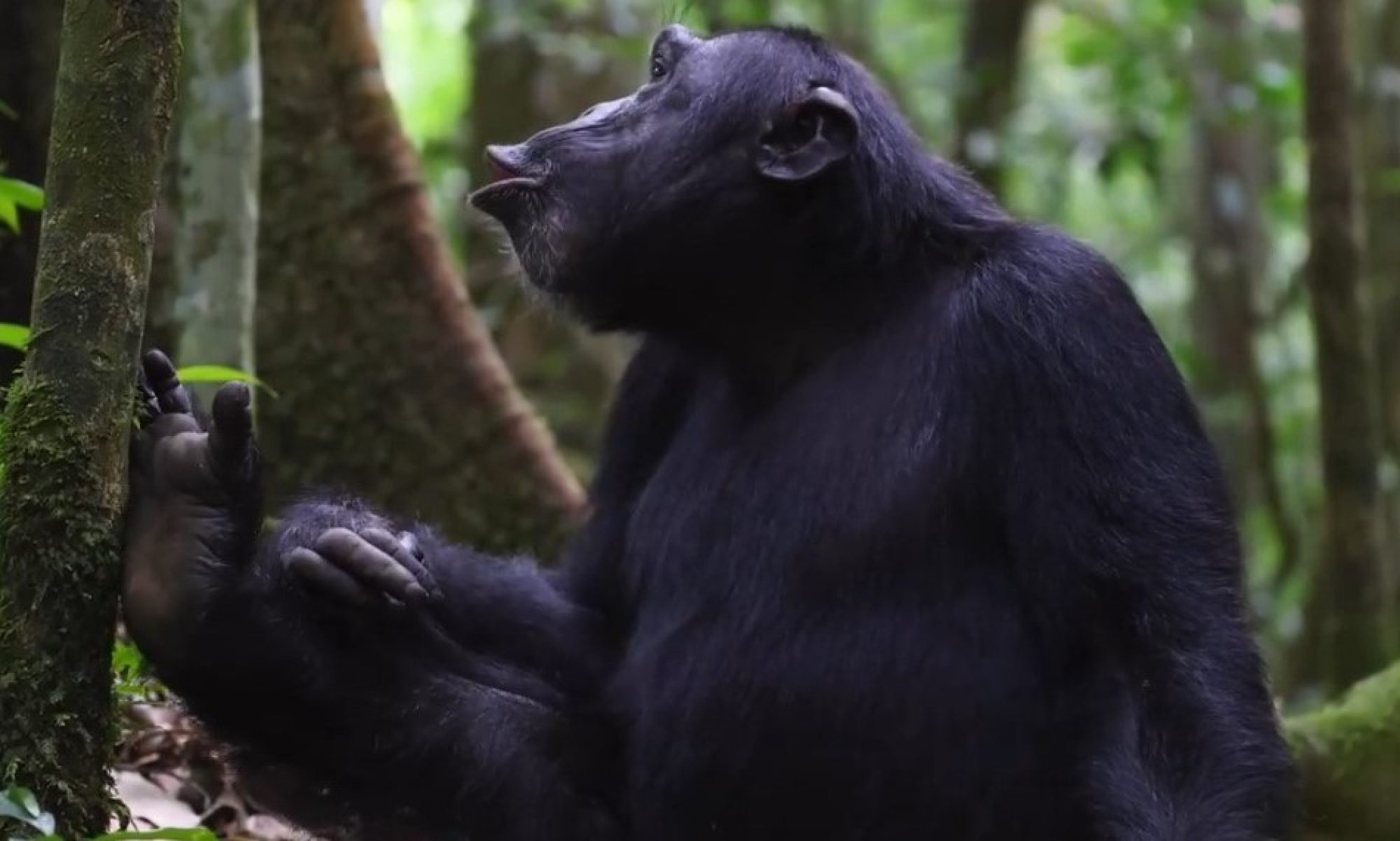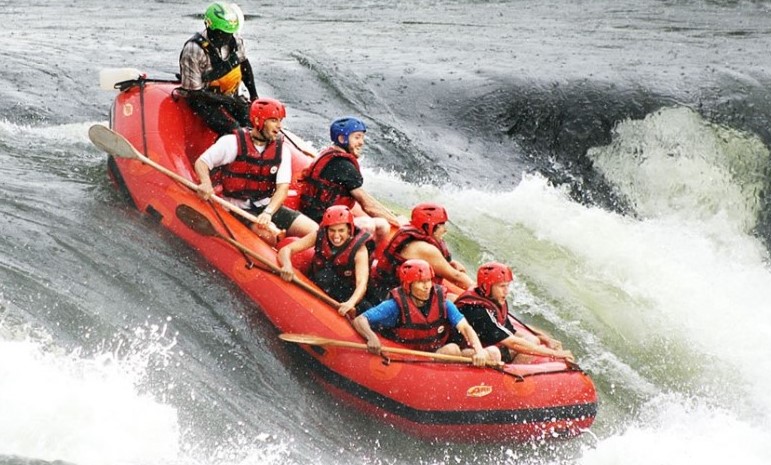Affordable top 20 days' Uganda bird watching & wildlife safari
A 20 days Uganda bird watching & wildlife safari to the Pearl of Africa’s savannah grassland and highlands is one of the greatest bird harboring ground on the continent making this nation one of the top birders haven on the planet. Uganda has over 1,000 bird species with some of these being unique endemics in this destination. Bird watching in Uganda along other activities such as gorilla trekking, chimpanzee tracking, golden monkey tracking, Africa’s big 5 game drives, scenery viewing, forest walks among others make bird watching safaris to Uganda worth a lifetime experience.

Arrival and departure: Entebbe
- Day 1- arrival transfer to Ziwa
- Day 2- birding & rhino tracking at Ziwa sanctuary
- Day 3- walking birding & transfer to Kidepo
- Day 4- birding & game drives in Kidepo
- Day 5- birding & hiking at Kidepo
- Day 6- birding & transfer to Murchison falls N.P
- Day 7- birding & boat cruise on River Nile
- Day 8- birding & hiking Murchison water falls
- Day 9- birding, chimp tracking & forest walk at Kibale N.P
- Day 10- Semuliki, birding and hot springs
- Day 11- birding & forest walk at Semuliki N.P
- Day 12- birding to Queen Elizabeth park
- Day 13- birding & game drives at Queen Elizabeth N.P
- Day 14- birding & boat cruise at Kazinga channel
- Day 15- birding & tree climbing lions at Ishasha sector
- Day 16- gorilla trekking & birding at Bwindi Impenetrable N.P
- Day 17- golden monkey tracking & birding at Mgahinga N.P
- Day 18- birding at Bunyonyi
- Day 19- birding at Mburo
- Day 20- botanical birding and nature walk and departure
Detailed 20 days Uganda bird watching & wildlife safari itinerary
Day 1 Lake Victoria shores
On arrival, our guide will pick you up from the airport to a resort or hotel for some rest at the shores of Lake Victoria; Africa’s largest lake for a rest as you chill in the cool lake breeze, scenic endless water horizons and numerous green islands and swampy shores that can also be visited by boat cruises, speed boats or canoes. These harbor numerous bird species with kingfisher being common and almost visible all over, Egyptian geese, water ducks, eagles, kites, marabou storks, white egrets and these shores become more interesting in the period between June and September when hundreds of migrant bird species from Europe fly in to settle at the shores of this lake.
Accommodation: Lake Victoria Serena hotel (or a similar one)
Meals: Breakfast| Lunch| Dinner
Ziwa rhino sanctuary has over 300 bird species of forest, woodland and swamp residence including the shoebill thus you will be granted another chance to see this spectacular bird, grey crowned crane, African fish eagle, African jacana, pied kingfisher, African grey hornbill, African pygmy kingfisher, marabou stork, white egrets, red-billed ox-peckers among others. Ziwa rhino sanctuary has more than 40 white southern rhinos, rothschild’s giraffes, kobs, leopards, swamps with papyrus endemics like the shoebill, African wild cats, warthogs, reptiles among other species. the sanctuary not having big predators, allows you to easily make nature walks to come to nearby engagement with the park’s wild game.
Accommodation: Ziwa rhino wildlife ranch (or a similar one)
Meals: Breakfast| Lunch| Dinner

Kidepo valley national park has the second highest number of bird species in Uganda recorded at 475 species in the park such ostriches, secretary bird, raptors, red throated bee-eaters, Abyssinian ground hornbill, kori bustard, dark chanting goshawk, red and yellow barbet, purple heron, clappertons francolin, Karamojong apalis, red billed ox-pecker, pygmy falcon, Ethiopian swallow, Jackson’s hornbills, golden pipit, chestnut weaver, rose ringed parakeet and egyptian vultures, among others along with 83 mammal species such as elephants, zebras, buffaloes, rothschild’s giraffes, kobs, hartebeests, blue monkey, hyenas, leopards, cheetahs, lions, wild dogs, jackals among others. Expect to enjoy views of big buffalo and elephant herds. You will have a nature walk and hike on higher altitudes of the park to have a vast scene of the park and its wild game. You will wind up the day while driving out of the park head to Murchison falls national park.
Accommodation: Apoka safari lodge (or a similar one)
Meals: Breakfast| Lunch| Dinner

Today you will head out to sections of the Murchison falls national park to continue exploring this vast grassland, palms, acacia trees, swamps, savannah and its remarkable wild game. Murchison falls park has more than 450 recorded resident bird species such as; the Abyssinian ground hornbill, Denham’s bustard, long-tailed nightjar, black-headed lapwing, long-toed lapwing, black-billed barbet, Senegal thick-knee, yellow-fronted tinker bird, rock pratincole, speckle-fronted weaver, white-browed sparrow, eastern plantain-eater, African grey woodpecker, red throated bee-eater, grey-headed kingfisher, swamp flycatcher, standard-winged nightjar, giant kingfisher, silver bird, blue-headed Coucal, black-headed gonelek among other hundreds of species making it one of the best birding destinations in Africa. You will have more glance at the park’s forest species while doing chimpanzee tracking in the forested section of the park. You will be amazed with many elephant families and their playful young ones, lion families, rothschild’s giraffes, waterbucks, buffaloes, baboons, reptiles, numerous bird species among others. Later on you will have a trek up to view the magnificent Murchison water falls from above and watch the strongest falls on the planet, gashing 3,000 cubic liters of water per second through an eight-meter corridor cascading down a 43-meter height into the “the devil’s caldron” forming a white mist and a signature rainbow producing a loud sound from the powerful force of the water of the river Nile, more than three- quarter of the total world population and numerous elephant and lion families, waterbucks, impalas, kobs, warthogs, hippos, buffaloes, crocodiles, leopards, hyenas, jackals among other mammals. After lunch you will then head to the banks of the river Nile for a boat cruise towards the face of the Murchison falls. While on the boat cruise, you will have more sceneries of various water birds like the shoebills, raptors, geese among others, hippos and a great number of huge nile crocodiles and many more mammals that approach the river banks to quench their thirst like buffaloes, elephants and the scenes are endless. You will also have a boat cruise to the Nile delta as it flows back to the albertine peninsular, an experience that obviously unmatchable as you watch the waters of the river Nile anchor the wild and its species.
Accommodation: Pakuba safari lodge (or a similar one)
Meals: Breakfast| Lunch| Dinner
Forest walks at Kibale will get you to chimpanzees and other primate species along with numerous sceneries of more than 370 bird species of grassland, forest, swamp and Albertine rift region endemics, 350 tree species which include; black bee-eater, Abyssinian ground thrush, crowned eagle, black-eared ground thrush, blue-breasted kingfisher, white-winged swamp warbler, pin-tailed whydah, red-fronted tinkerbird, purple-breasted sunbird, little Greenbuls, blue-headed sunbird, dusky crimsonwing, African pitta, great blue turaco, green-breasted pitta, black-capped apalis, yellow-ramped tinkerbird, black-throated apalis, brown-chested alethe, masked apalis, red-faced barbet among others. Kibale national park is known for chimpanzee tracking and for having the highest population & concentration of chimpanzees in world numbering above 1,500 individuals in the park. The tracking session start at 08:00, 11:00 & 14:00 and takes 2-5 hours with a more than 90% chance of meeting the chimpanzees; other primates in the park include the L’hoest monkeys, colobus monkeys, blue monkey, olive baboon, red tailed monkey, vervet monkeys. Mammal species include leopards, lions, elephants, water bucks, warthogs, giant forest hog, sitatungas, hippos, buffaloes, hyenas, jackals, and other nocturnal species. after the evening tracking you will head out of the park.
Accommodation: Kibale forest lodge (or a similar one)
Meals: Breakfast| Lunch| Dinner
This day will find you at one of the most gorgeous places in Africa for its remarkable features and as a landmark position between East and Central Africa thus having vegetation and forests of characteristics of both regions. Semuliki national park has hot springs that were a result of geological actions dating thousands of years back; these produce water of over 100°C producing white mist and smoke in the forests. It’s a common for visitors to buy raw eggs and boil them at the hot water point. Locals in the area also believe that the hot springs are a blessing and of supernatural healing as this hot water comes up from the ground among different rock layers filled with various minerals such as sulphate, zinc among that heal fungal and many other skin diseases. Semuliki game park is also an intersection of the east African grasslands and the central African tropical forests thus harboring numerous tree species of the west and central African forests and bird species. the park has 435 bird species, 11 primate species and 53 mammal species. some of these include Albertine Rift Endemics such as the dwarf honey guide and purple-breasted sunbirds; 35 Congo-Guinea biome species found nowhere else in East Africa, including black dwarf hornbill, Nkulengu rail, Congo serpent eagle, Gabon, woodpecker; and other species with very limited ranges such as white-tailed hornbill, capuchin babbler, blue-headed crested flycatcher and the orange weaver. Mammal and primate species include; chimpanzee, blue monkey, black and white colobus, red colobus, olive baboons, vervet monkey, de brazza’s monkey, Mangabeys, stripped jackal, leopards, elephants, hippos, cape buffaloes, Uganda kobs, sitatungas, warthogs, nile crocodiles. In the afternoon, you will continue with the birding experience enroute Kampala.
Accommodation: Semuliki safari lodge (or a similar one)
Meals: Breakfast| Lunch| Dinner
This day will find you at queen Elizabeth national park; Africa’s second best bird watching destination with over 660 recorded resident bird species and migrant species between June and September. The park has the highest concentration of bird species per square kilometer in Africa thus giving a non-stop bird spotting experience. Uganda an outstanding birding haven of all forest, swamp, highland, grassland and Albertine endemic such as these include Albertine Rift Endemics such as the dwarf honey guide and purple-breasted sunbirds; 35 Congo-Guinea biome species found nowhere else in East Africa, including black dwarf hornbill, Nkulengu rail, Congo serpent eagle, Gabon woodpecker among others, the Africa’s big 5 game; elephant herds, lion families, leopards, hippo herds, hyenas, wild dogs, Uganda kobs, water bucks, antelopes, baboons, monkeys, crocodiles, crater lakes, reptiles, raptors, sun birds and many more awaiting your memorable tour in this game park. You will head out to the Kazinga channel (a river connecting lakes Edward and George) for a morning boat cruise through queen Elizabeth national park. At this Uganda bird watching & wildlife safari experience you will have a glance at the world’s largest concentration of hippos which are numbered above 5,000 at the Kazinga channel, Nile crocodiles, buffaloes, water birds and other land birds coming in to quench their thirst, elephants, lions and other land wild game like water bucks, giraffes, kobs, kudus among others also coming in onto the banks of the Kazinga channel to quench their thirst. After the boat cruise, you will embark on a game drive around this channel and beyond into the vast savannah grassland to enjoy more game viewing at more lion and elephant families, ostriches, cheetahs, leopards, raptors and vultures, reptiles, monkeys, wild dogs among other creatures, scenery views of the ice capped mountain Rwenzori and its slopes as you head to the Ishasha sector of the park that is famously known for tree climbing lions; a character of lions known for on 2 places in Africa particularly this park being one of them.
Accommodation: Mweya safari lodge (or a similar one)
Meals: Breakfast| Lunch| Dinner
On arrival you will have a briefing on the gorilla behaviors, livelihoods and how to handle their reactions to the human presence. The trek into the tropical montane forests will last between 30 to 2 hours before meeting the gorilla family you are assigned to and you will be allowed to follow and spend an hour with that gorilla family. Getting to find the mountain gorillas on a trek in Uganda is a 99% chance backed up by the gorilla population in this region. After the trek, you will have an experience with the Batwa people who have for all their life time co-existed with the forest and its species. During this nature walk in the forest trails you will experience numerous bird species with particularly 23 albertine endemics that are habitats to only the albertine region some of which include; black bee-eater, regal sunbird, handsome spurfowl, giant kingfisher, bar-tailed trogon, mountain masked apalis, strange weaver, white tailed blue fly catcher, yellow-eyed black flycatcher, red-headed bluebill, yellow-chinned sunbird, purple-breasted sunbird, Chapin’s flycatcher, Rwenzori nightjar, blue-headed sunbird, pink-footed puff back, crowned hornbill, Shelley’s crimsonwing, bushshrike, black-billed turaco, Doherty’s bushshrike, mountain oriole, cinnamon-chested bee-eater, brown-capped weaver, Waller’s starling, red-faced woodland warbler, African emerald cuckoo, dusky crimsonwing, dwarf honeyguide
Accommodation: Mgahinga lodge (or a similar one)
Meals: Breakfast| Lunch| Dinner
Early in the morning after breakfast and a briefing, you will hike the volcanic mountains of the Mgahinga to a height of 2,500 meters above sea level in the bamboo forests of the montane region where these unique primates reside. The forest trails offer the best chance of seeing high land endemics such as; cape robin chat, pin tailed whydah, moorland chat, dusky crimsonwing, speckled mousebird, Rwenzori turaco, Rwenzori batis, kivu ground thrush, black colored apalis, blue headed sunbird, red throated alethe, purple chested sunbird, cinnamon-chested bee-eater, red faced woodland warbler, African olive pigeon, Rwenzori nightjar, African paradise flycatcher among others. The orange-yellow like hair color of the golden monkeys give them that distinguished golden look. When you reach their residence, you will be allowed to stay around them for one hour. These live in families of hundreds and have a very playful character, they will keep you so entertained. Looking at them critically, you will notice their facial appearance that the golden monkeys have a nose so different from that of many other primate species. along the hike, you will also observe other primates like the red tailed monkeys, white and black colobus monkeys, reptiles, Albertine rift endemics and many more bird species. later you will head to lake Bunyonyi; Africa’s deepest crater lake and one of the most gorgeous lakes on the continent.
Accommodation: Bird’s nest @ Bunyonyi resort
Meals: Breakfast| Lunch| Dinner
Lake Bunyonyi; one of the most beautiful lakes in Africa. Some of the most amazing attributes of the lake are being the deepest crater lake in Africa, the 29 islands located in its waters which toured by use of a boat/canoe and safe waters with no crocodiles and hippos. The lake harbors over 200 bird species with the gray crowned crane being one of the most remarkable birds, Pied kingfisher, Malachite kingfisher, Cinnamon-chested Bee eater, Bronzy sun bird, Pied wagtail, Grey shrike, Grey crowned crested crane, Hadada ibis, Swamp fly catcher, Black heron, Great cormorant, Fan-tailed widow bird, Streaky seed eater, Speckled mouse bird along with breathtaking sceneries of the volcano mountains ad slopes of Muhavura will leave you stunned at this beautiful lake and its surrounding. The later afternoon hours will get you transferring to lake Mburo national park for another day on the Uganda bird watching & wildlife safari.
Accommodation: Mihingo lodge (or a similar lodge)
Meals: Breakfast| Lunch| Dinner
Commonly known for its high zebra population, Lake Mburo national park offers a wide range of touring options from board rides, horseback riding safaris, walking safaris, game drives, biking/cycling safaris and community walks. You will have a night wild safari which lasts 2-3 hours to exhaust both the days’ and nocturnal species of the park. The park has 70 mammals and 332 recorded bird species and is richly gifted with various acacia and papyrus endemics such as the papyrus gonelek, pied kingfisher, red faced barbet, malachite kingfisher, saddle-billed stork, blue headed coucal, yellow-breasted apalis, yellow-rumped tinkerbird, bare-faced go-away-bird, greater painted-snipe, brown-chested lapwing, speckled moosebird, African wattled lapwing, black bellied bustard, long-tailed Cisticola, blue-breasted kingfisher, papyrus yellow warbler, white-winged warbler and shoebill; as the acacia species are wide spread elsewhere in the park. Mammals include burchell’s zebras, Nubian giraffes, hippos, leopards, buffaloes, topi, elands, antelopes, warthogs, bushbucks, stripped jackals, reedbucks, olive baboons, sitatungas, bush pigs, hyenas, impalas, crocodiles, reptiles among others. Later you will embark on a 4-hour journey to Kampala.
Accommodation: Lake Victoria Serena hotel (or a similar one)
Meals: Breakfast| Lunch| Dinner
Day 20 Botanical gardens & departure
On the last day, you will head to the botanical gardens still along the shores of the lake. This walking tour at the cool 40.7 hectare botanical gardens along the shore of Lake Victoria. The gardens are also common for biking/ cycling safari, monkey feeding, bird watching safari and 500 plant species including both foreign and indigenous. The park has more than 400 recorded bird species that inhabit these gardens such as; blue headed Coucal, white egrets, red-chested cuckoo, black cuckoo, African cuckoo, laughing dove, rock pigeon, Egyptian goose, yellow-billed buck, red-billed duck, spur winged goose, white faced whistling duck, blue turaco among others. These plants are categorized into indigenous and non-native fruits, medicinal, beverage, spices, ornamentals, timber, oils and important crop wild relatives, several of these threatened in the wild and agro-ecosystems. This tour will be in timed along with your departure time.
Accommodation: N/A
Meals: Breakfast| Lunch| Dinner
Inclusions
- Airport transfers
- Gorilla trekking permits
- Golden monkey tracking permits
- Chimpanzee tracking permits
- Park entry fees
- All excursions indicated in the itinerary
- Transport 4×4 safari landcruiser
- Government taxes
- Laundry
- Driver & guide
- Bottled drinking refreshments
Exclusions
- International flights
- Travel insurance
- Visa fees & processing
- Extra activities, meals, alcohol/ liquor
- Tipping & gratitude
- Souvenirs & snacks
- Any changes to the itinerary
- Accommodation after the end of the trip
- Anything not mentioned
Similar safari travel packages
- 1 day Rwanda gorilla trekking safari
- 1 day Uganda gorilla trekking safari
- 2 days Fly-in Uganda gorillas safari
- 2 day Rwanda gorilla trekking safari
- 2 day birding & wildlife Kenya experience
- 3 days Masai Mara safari experience
- 3 days Uganda gorilla trekking safari
- 3 days Murchison falls Uganda safari
- 3 days Diani experience
- 4 days Serengeti wildebeest migration safari
- 4 days Kenya wildlife safari
- 4 day Rwanda gorilla trekking safari
- 4 days Zanzibar experience
- 5 days Tanzania birding safari
- 5 days Murchison falls & rhino tracking safari
- 5 days Rwanda safari
- 5 days Uganda birding safari
- 5 days Luxury gorilla trekking safari experience
- 5 days Uganda gorillas & primates safari
- 6 days Tanzania wildlife experience
- 6 days gorilla trekking & wildlife Uganda safari
- 6 days Kenya wildlife expedition
- 6 days Rwanda wildlife safari
- 6 days Murchison birding safari
- 6 days gorillas, chimpanzees & wildlife Uganda safari
- 8-day primates & wildlife Rwanda safari
- 7 days Uganda gorillas and wildlife safari
- 4 days Murchison falls safari
- 7 days Masai Mara- Serengeti safari
- 7 days bird watching Kenya safari
- 7 days birding Kenya safari
- 7 days Tanzania wildlife experience
- 7 days Uganda- Rwanda wildlife safari
- 7 days Uganda- Rwanda primates safari
- 8 days Rwanda- Uganda wildlife safari
- 8 days primates & wildlife Rwanda safari
- 8 days Serengeti- Amboseli- Diani safari
- 9 days Tanzania birding expedition
- 10 days Source of the river Nile- Masai Mara safari
- 10 days Uganda primates & wildlife safari
- 10 day Tanzania safari experience
- 10 days Kenya wildlife safari
- 10 days Rwanda- Uganda wildlife safari
- 10 days Kenya- Tanzania safari
- 10 days Rwanda- Uganda wildlife safari
- 10 days Serengeti- Zanzibar safari
- 12 days Rwanda- Uganda wildlife safari
- 12 days Tanzania wildlife safari experience
- 15 day Uganda primates & wildlife safari
- 15 days Rwanda- Uganda wildlife safari
- 16 days gorilla trekking & River Nile Uganda safari
- 16 days gorilla trekking- source of the river Nile- Masai Mara safari
- 18 days Uganda birding & primates safari
- 21 days gorilla trekking- R. Nile & wildlife Uganda safari
- 24 days Rwanda-Uganda-Kenya-Tanzania wildlife safari
- 30 days Uganda birding & wildlife safari
More safari travel to Africa tips
- Why book gorilla trekking permits in advance
- Facts about mountain gorillas
- Africa’s big 5 wildlife safaris
- Cost of gorilla trekking safaris
- Gorillas, chimpanzees & primate species safari
- Top gorilla trekking destinations
- Kayaking on river Nile/ Africa safari
- Gorilla trekking safari from USA, New York, California, Washington
- Top Africa safari packages
- Coming for gorilla trekking from United Kingdom
- Wildebeest migration
- Booking well planned Africa safari visits
- Chimpanzee tracking safaris
- Shoebills & birding safaris
- Guide to Africa safari
- Scuba diving & snorkeling
- Booking gorilla trekking permits in advance
- Gorilla trekking safari from India
- Gorilla trekking safaris in Rwanda
- What to wear on gorilla trekking safari
- Booking affordable safari packages
- What to know before setting off for Africa safari
- Uganda gorilla trekking safaris
- Africa big 5 game & wilderness safaris
- Soft white sand beach holidays & vacations
- Bungee jumping at the river Nile
- Gorilla trekking safari from USA
- Activities to do on safari visits to Africa
- How to prepare for a gorilla trekking safari
- Night life experiences in African cities
- Masai Mara wildebeest migration safari
- Gorilla trekking tours from Morocco
- Queen Elizabeth park birding experience
- Chimpanzee tracking in Rwanda
- Gorilla trekking expeditions from South Africa
- Source of the river Nile safari experiences & expeditions
- Cultural tours
- Gorilla trekking tours from Dubai
- Best places to visit in Uganda
- Safari visits to Africa and vacation packages
- Chimpanzee trekking safari experiences in Africa
- Bird watching on Africa safaris
- Gorilla trekking safari from south Africa
- White water rafting at the source of the river Nile
- Serengeti wildebeest migration safaris
- Top Africa safari experiences
- Zanzibar island vacation
- Gorilla trekking tours from Scandinavia
- Diani soft white sand beaches
- Water rafting on Africa safari
- Summer safari visits in Africa
- Gorilla trekking tours from Egypt
- Wilderness game drives on Africa safari
- Luxury gorilla trekking safari
- Mountain climbing & hiking
- Top short Kenya safaris




